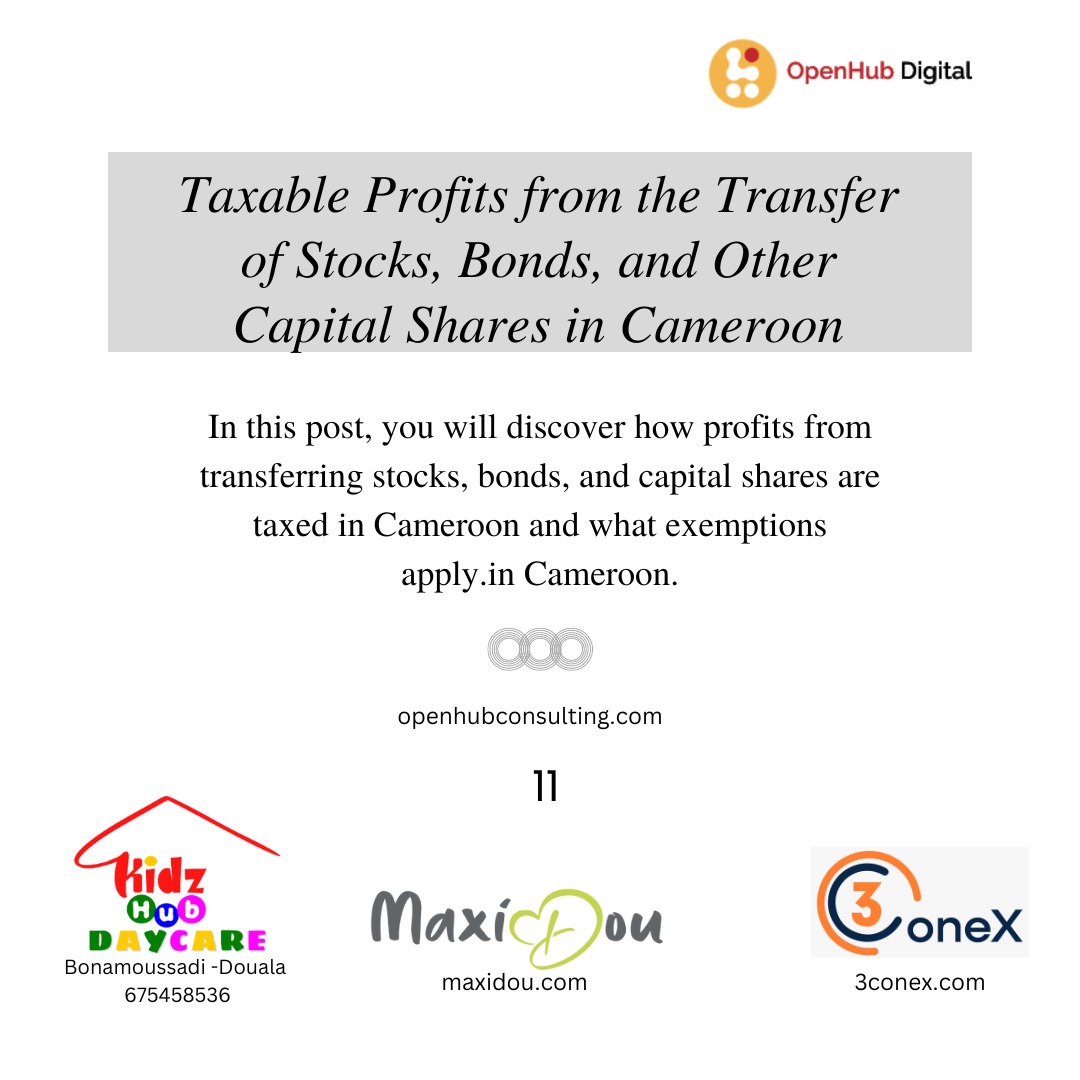In our previous post, we explored taxable income from financial assets, deposits, and securities. Today, we turn our attention to profits from the transfer of stocks, bonds, and other capital shares as specified in Section 42 of the Cameroonian tax code.
What Are Taxable Profits from Transfers?
Section 42 outlines that net overall capital gains from the transfer of stocks, shares, and bonds, whether realized in Cameroon or abroad, are taxable. This includes indirect transfers between foreign companies that involve enterprises governed by Cameroonian law. Here’s a closer look:
Taxable Events Include:
- Direct Transfers: Selling or transferring ownership of stocks, shares, or bonds directly.
- Indirect Transfers: Transfers between foreign companies that own shares or bonds in Cameroonian enterprises.
- Consolidation Scope Transfers: Transactions within a group of companies where one entity holds shares in a Cameroonian enterprise.
Example of Taxable Profits
Imagine you own shares in a Cameroonian company. You sell these shares and make a profit of CFAF 2,000,000. This profit is subject to personal income tax under Cameroonian law. The tax must be paid before registering the transaction using a form provided by the taxation department.
Exemptions from Tax
Certain income types are exempt from personal income tax, according to Section 43:
- Interest on Government Loans: Interest from negotiable securities issued by the State or local authorities.
- Savings Account Interest: Interest on savings accounts with deposits up to CFAF 50 million.
- Housing Savings Accounts: Interest earned specifically for housing savings.
- Cash Vouchers: Interest from cash vouchers.
- Small Capital Gains: Capital gains below CFAF 500,000 are exempt from taxation.
How to Calculate and Pay Taxes
- Determine Net Gains: Calculate the total profits from the transfer of stocks, bonds, or shares.
- Report and Pay: Use the form provided by the taxation department to report and pay the necessary tax before registering the transfer.
- Consult a Professional: For accurate calculations and compliance, seek guidance from a tax professional.
Example Calculation
Suppose you transfer bonds worth CFAF 1,000,000 and realize a profit of CFAF 400,000. Since this amount is below the CFAF 500,000 threshold, it is exempt from tax. However, if the profit were CFAF 600,000, you would need to pay tax on the entire amount.
Why Is This Important?
Understanding these regulations ensures you remain compliant with Cameroonian tax laws and avoid potential penalties. It also helps in planning financial decisions involving transfers of stocks, bonds, and capital shares.
Key Points to Remember
- Profits from transferring stocks, bonds, and capital shares are generally taxable.
- Certain exemptions apply, particularly for small gains and specific types of interest.
- Ensure taxes are paid before registering transfers.
Disclaimer
This content is for informational purposes only and should not be taken as tax advice. For personalized assistance, consult a tax professional.
Next Steps
In our next post, we will cover the taxation of income from digital assets, as per the provisions in Section 42a. Stay tuned to understand the latest regulations on digital asset income.
For professional assistance with your business and tax needs, visit OpenHub Consulting. We offer services in company registration, tax declarations, sales and marketing, bookkeeping, and accounting for small businesses in Cameroon.
Have questions? Leave a comment or revisit our previous post here.
Previous Post: Understanding Taxable Income from Financial Assets, Deposits, and Securities in Cameroon
Next Post: Taxation of Income from Digital Assets in Cameroon
Discover more from OpenHub Digital
Subscribe to get the latest posts sent to your email.

